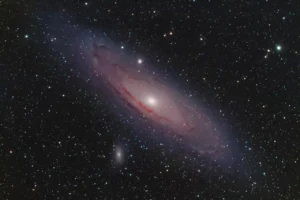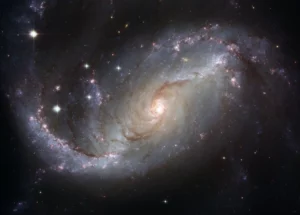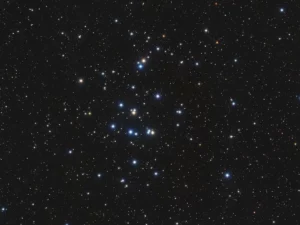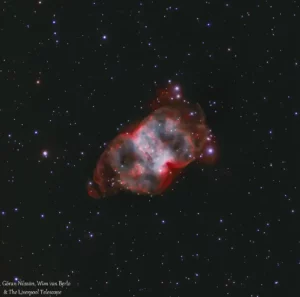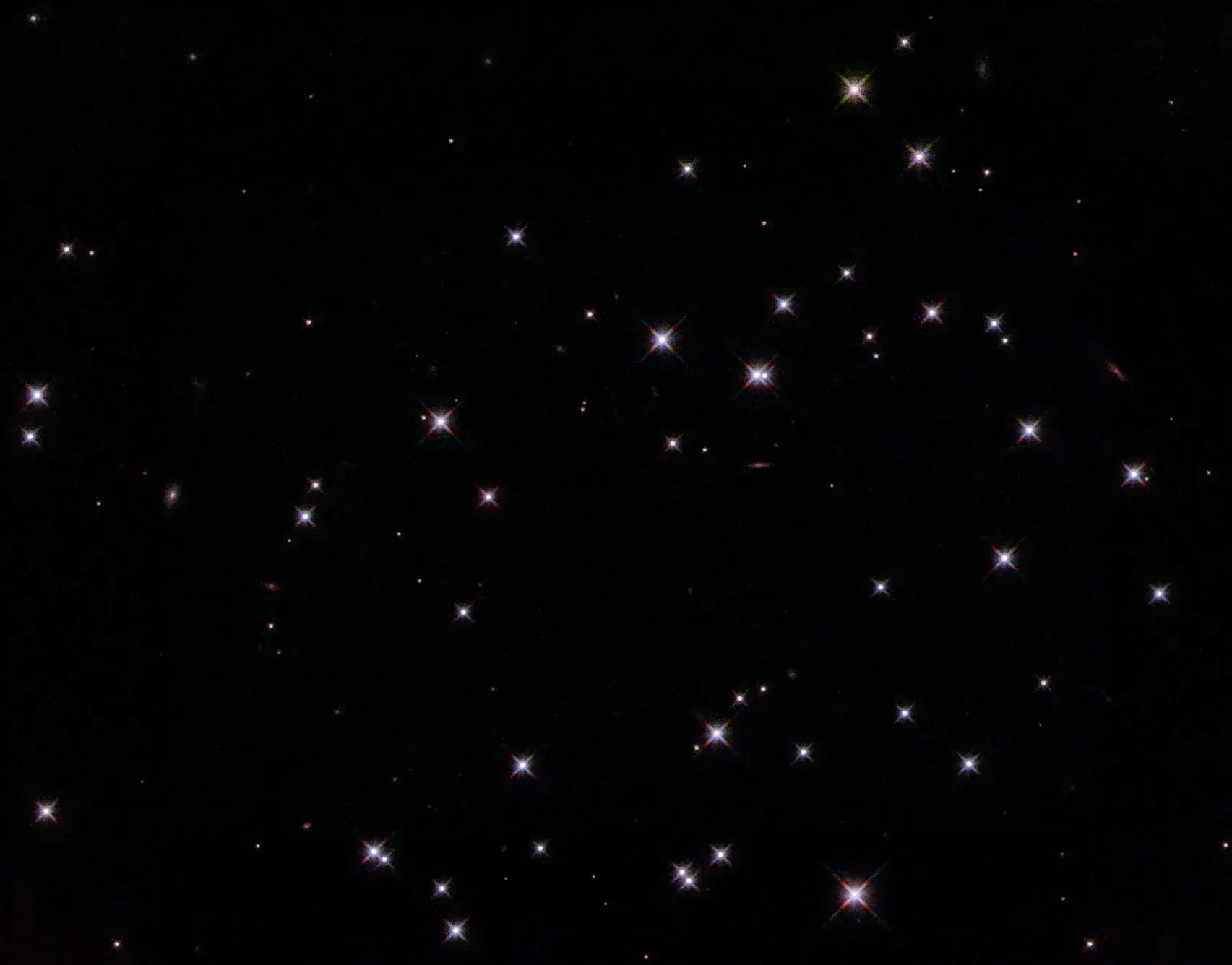
PK 64+5.1 (Campbell’s Hydrogen Star)
Planetary nebulae are very inappropriately named. They were so-called by Sir William Herschel, because their pale, often greenish disks made them look superficially like the planets Uranus and Neptune when seen through a telescope. However, they are not true nebulae and have nothing whatsoever to do with planets.
Planetary nebulae are in fact old, highly evolved stars, which have thrown off their outer layers. The discarded shells shine because of the ultraviolet radiation emitted by the central star, which is extremely hot (with a surface temperature that may reach 200,000 degrees Fahrenheit) and is well on its way to becoming a white dwarf.
The best-known planetary nebula is M57, the Ring Nebula in Lyra, which is easy to locate between the naked eye stars Beta and Gamma Lyrae; telescopically it looks like a tiny, luminous ring, with a dim central star. Other planetary nebulae are less regular; M27, the Dumbbell Nebula in Vulpecula, earns its nickname, while the rather faint M97, in Ursa Major, is called the Owl because the positions of two embedded stars do give an impression of two gleaming eyes in an owl’s face.
Unfortunately, not many planetary nebulae show such a wealth of detail in amateur telescopes – most of them appear as minuscule disks, almost impossible to distinguish from the background stars. A fine example of this type of planetary nebula is PK 64+5.1, or Campbell’s Hydrogen Star, a tiny but surprisingly bright object located about 2.5° north of Albireo.
Herschel never saw PK 64+5.1, nor does it belong to the NGC. Its position is not plotted on many sky atlases and most modern observing guides let it pass without notice. What is this planetary?
In 1893, the American astronomer William Campbell was observing through a visual spectroscope at Lick Observatory, when he happened upon this strange object in southern Cygnus. From its spectrum, it was clearly not an ordinary star, but rather a tiny planetary nebula. Today we know it as Campbell’s Star, although it is labeled on most maps as PK 64+5.1, a designation from the Catalogue of Galactic Planetary Nebulae.
Even though it is visible with small telescopes, Campbell’s Star is only recognizable as a planetary when viewed with moderately high magnification. Because PK 64+5.1 is only 5″ across, an 8-inch reflector at 200x reveals just a small, 9th-magnitude greyish disk. Larger telescopes equipped with an OIII filter will also show the nebula’s 11.3-magnitude central star.

Emil, an avid astronomy writer, formerly owned and ran nightskyinfo.com, making the universe more comprehensible for his readers. He has recently handed over its reins to Tom Urbain from starlust.org, ensuring that his legacy of simplifying the stars continues to enlighten and inspire.
Discover More Deep Sky Objects to Observe🔭
This page is part of our collection of deep-sky objects articles. If you enjoyed the read, then you’ll love the following articles.

